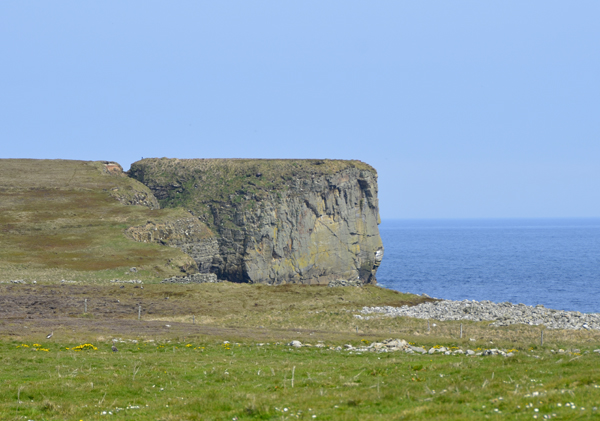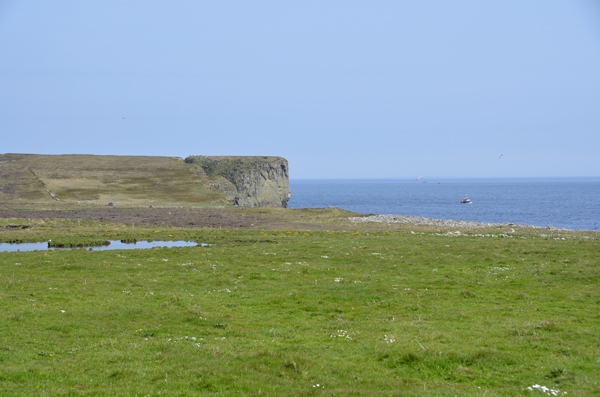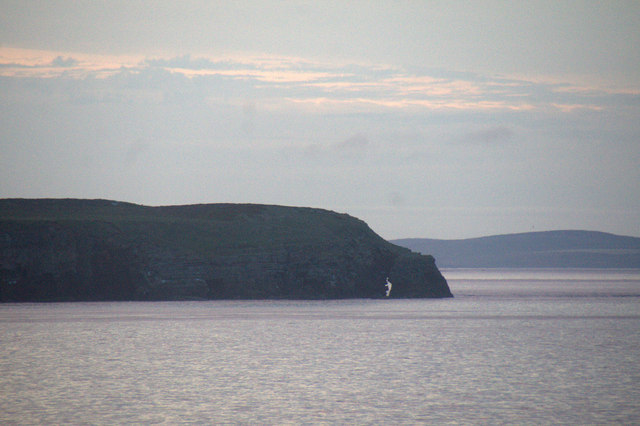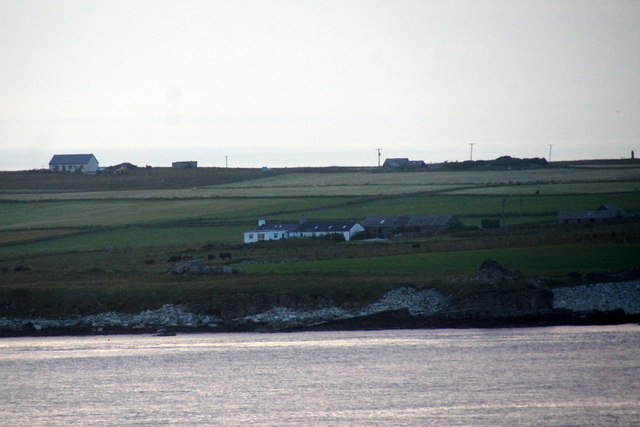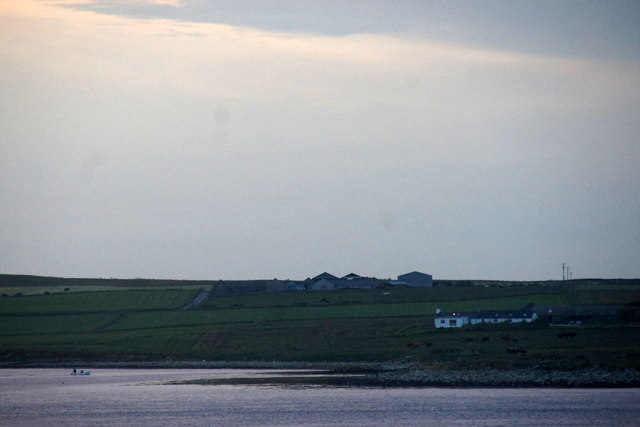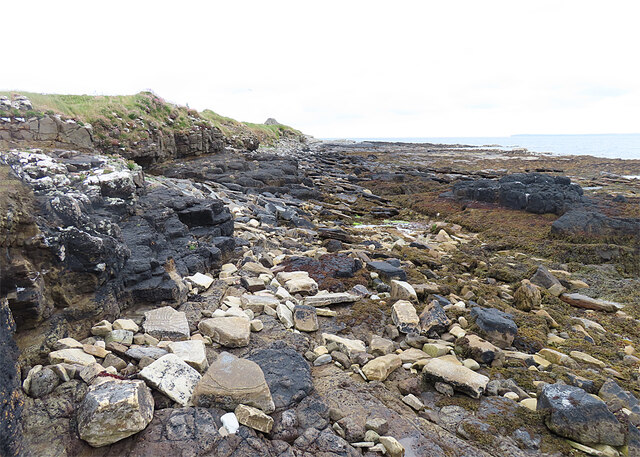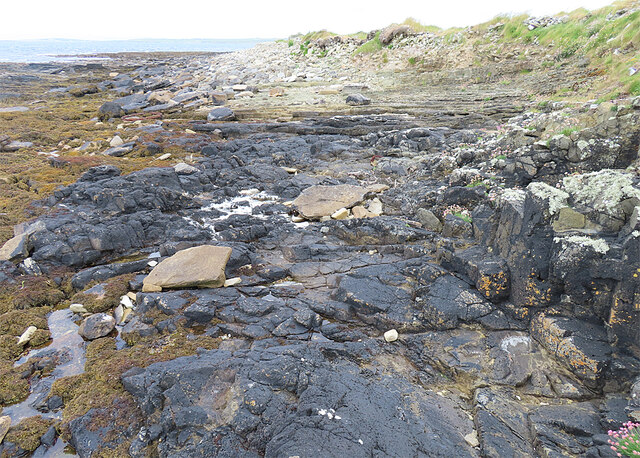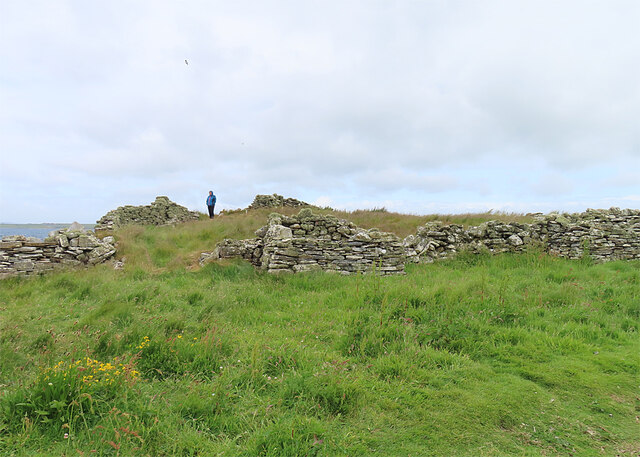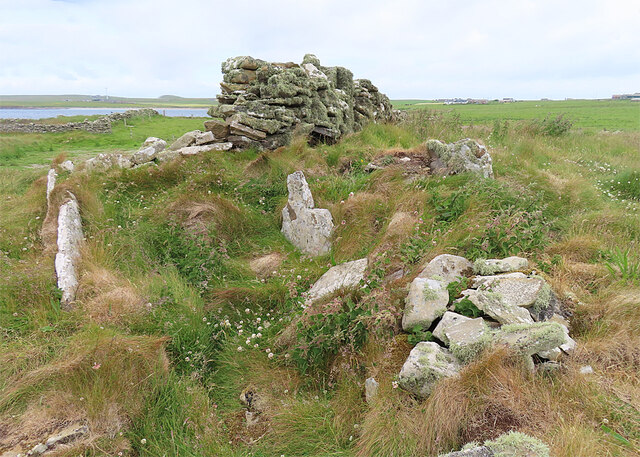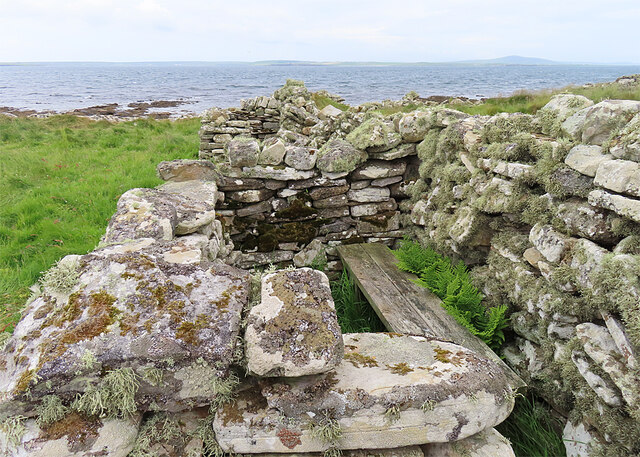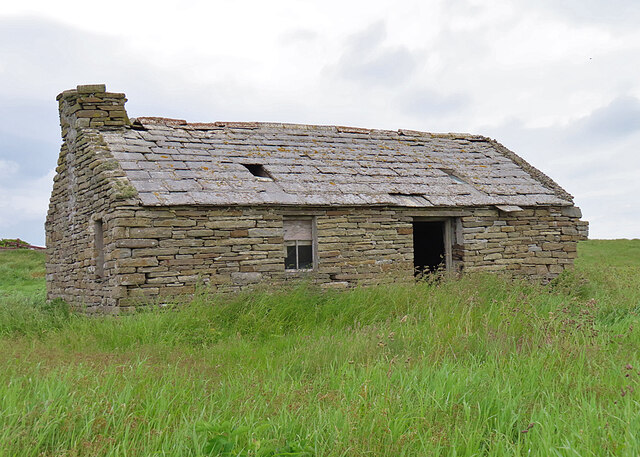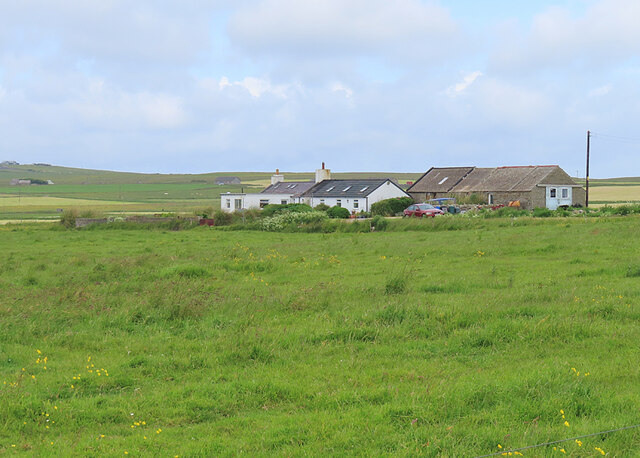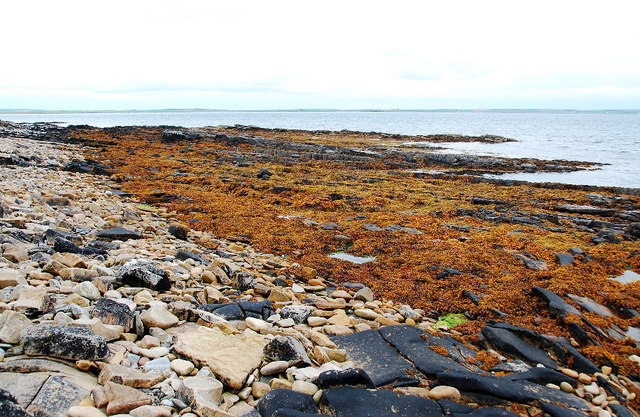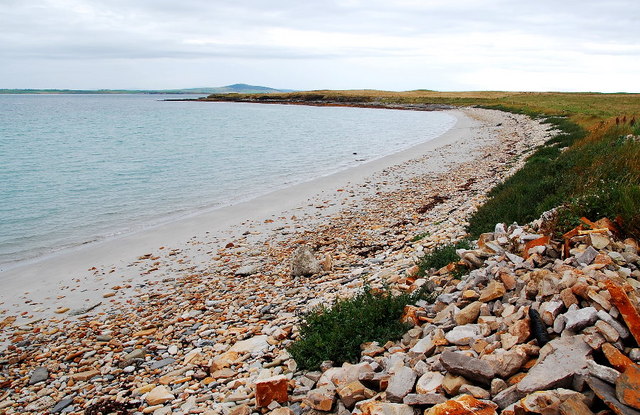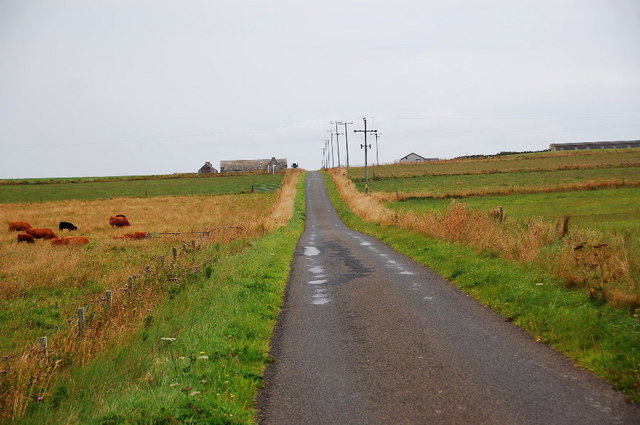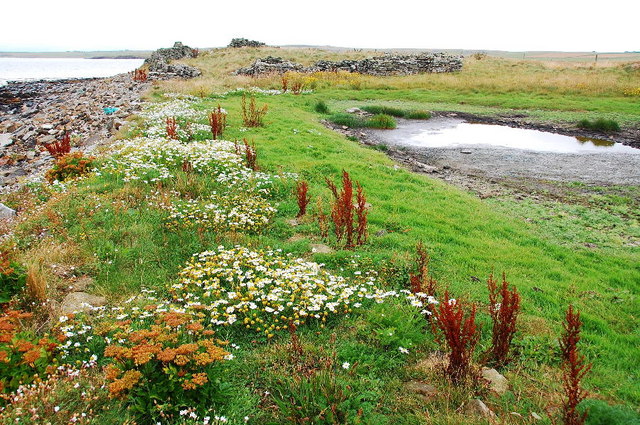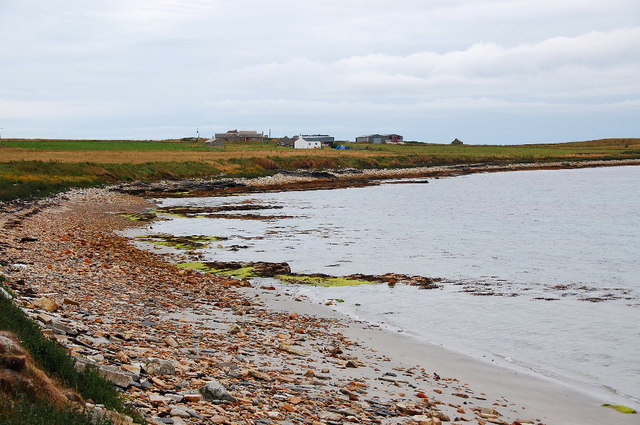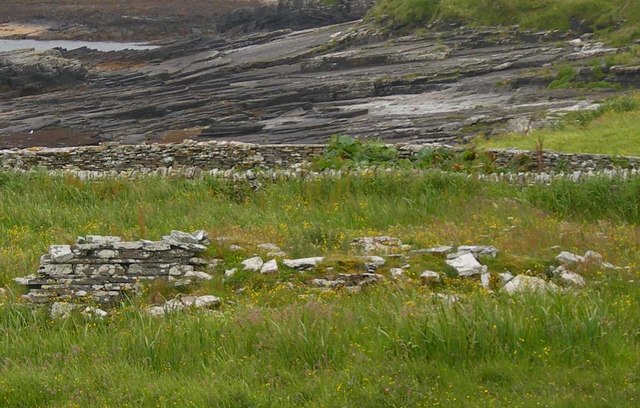Carlins
Coastal Feature, Headland, Point in Orkney
Scotland
Carlins
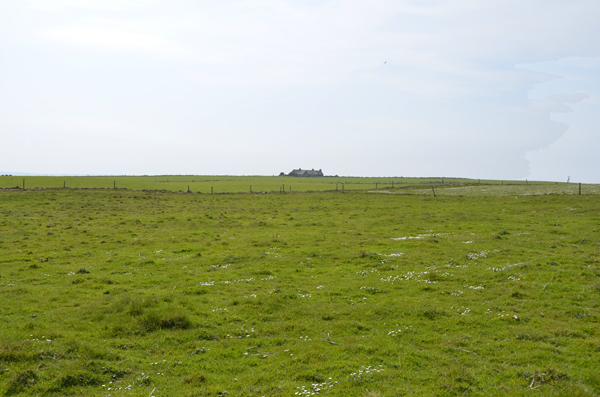
Carlin's, located in Orkney, Scotland, is a prominent coastal feature renowned for its striking headland and stunning views. Situated on the northeastern coast of the Mainland, Orkney's largest island, Carlin's stands tall as a prominent point overlooking the North Sea.
This rugged headland is characterized by its steep cliffs, which provide a natural barrier against the crashing waves below. The cliffs offer a mesmerizing display of geological formations, showcasing layers of sedimentary rock and showcasing the island's geological history. The jagged cliffs also serve as a nesting site for a variety of seabirds, including kittiwakes, guillemots, and razorbills, making it a popular destination for birdwatchers.
Carlin's Point is famous for its panoramic views, offering visitors a breathtaking vista of the surrounding coastline and the vast expanse of the North Sea. On clear days, it is even possible to spot the distant islands of Shapinsay and the smaller islets of the Orkney archipelago. The headland's elevated position also provides an ideal vantage point for whale and dolphin watching, as these majestic creatures can often be seen swimming in the waters below.
Access to Carlin's Point is relatively easy, with a well-maintained footpath leading visitors from the nearby village of Birsay. The path meanders through picturesque coastal landscapes, adorned with wildflowers and grassy dunes. This scenic walk adds to the charm of the area and enhances the overall experience for visitors.
In summary, Carlin's, Orkney is a captivating coastal feature, offering a combination of stunning cliffs, diverse wildlife, and breathtaking views of the North Sea. It is a must-visit destination for nature enthusiasts and those seeking a tranquil escape in the heart of Orkney's natural beauty.
If you have any feedback on the listing, please let us know in the comments section below.
Carlins Images
Images are sourced within 2km of 59.017172/-2.8289806 or Grid Reference HY5214. Thanks to Geograph Open Source API. All images are credited.
Carlins is located at Grid Ref: HY5214 (Lat: 59.017172, Lng: -2.8289806)
Unitary Authority: Orkney Islands
Police Authority: Highlands and Islands
What 3 Words
///warp.structure.copper. Near Balfour, Orkney Islands
Nearby Locations
Related Wikis
Castle Bloody
Castle Bloody is a prehistoric feature on the island of Shapinsay, Orkney, Scotland. Hogan observes that while the feature is marked as a chambered mound...
Mor Stein
Mor Stein is a neolithic standing stone in the southeastern part of the island of Shapinsay, Orkney Islands, Scotland. Shapinsay is one of the two large...
Bay of Linton
The Bay of Linton is a bay on the east coast on the island of Shapinsay in the Orkney Islands, Scotland. To the north of Linton Bay are the headlands...
Linton Chapel
Linton Chapel is a ruined chapel on the east coast of Shapinsay, Orkney (Grid Reference HY5218). The chapel is thought to date as early as the 12th century...
Nearby Amenities
Located within 500m of 59.017172,-2.8289806Have you been to Carlins?
Leave your review of Carlins below (or comments, questions and feedback).
